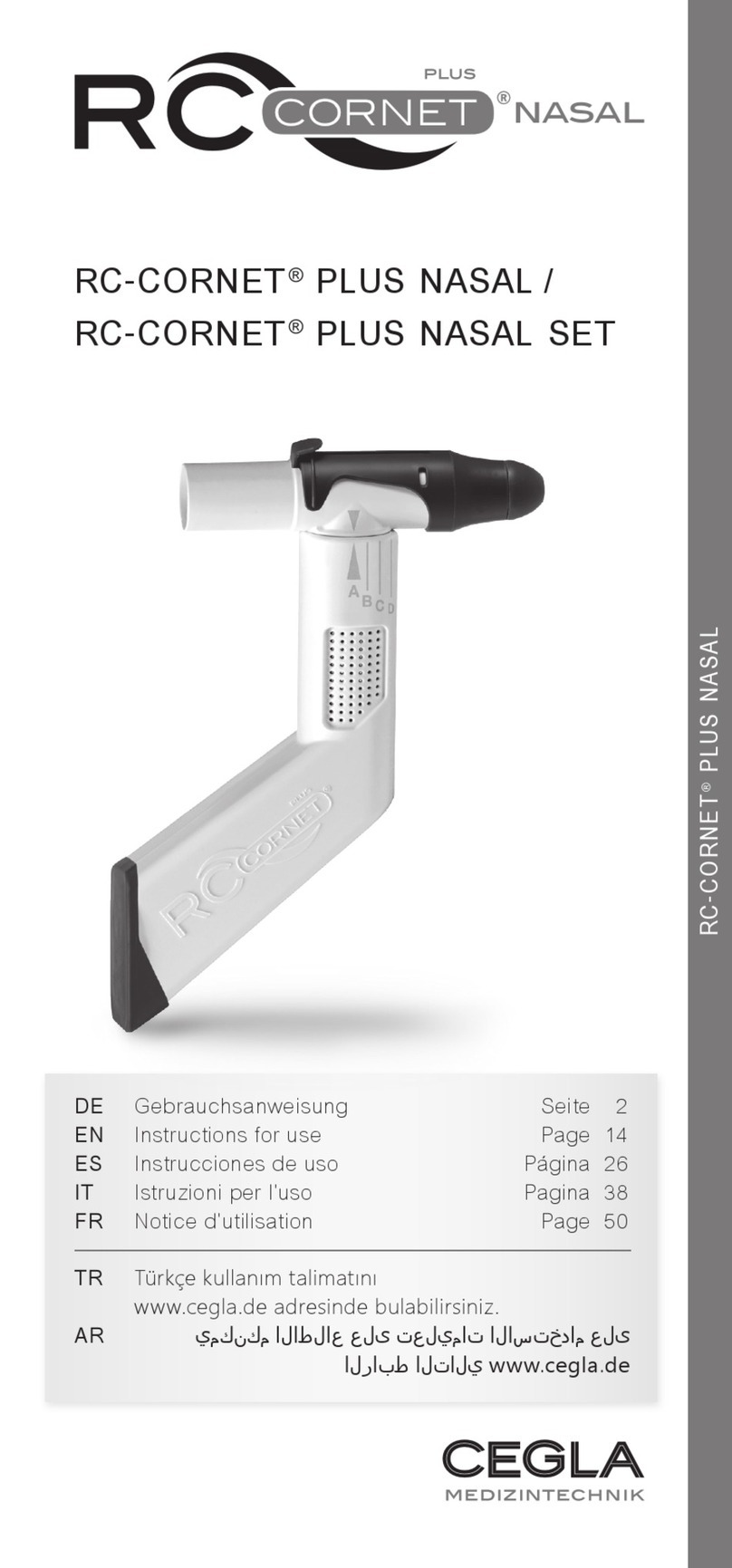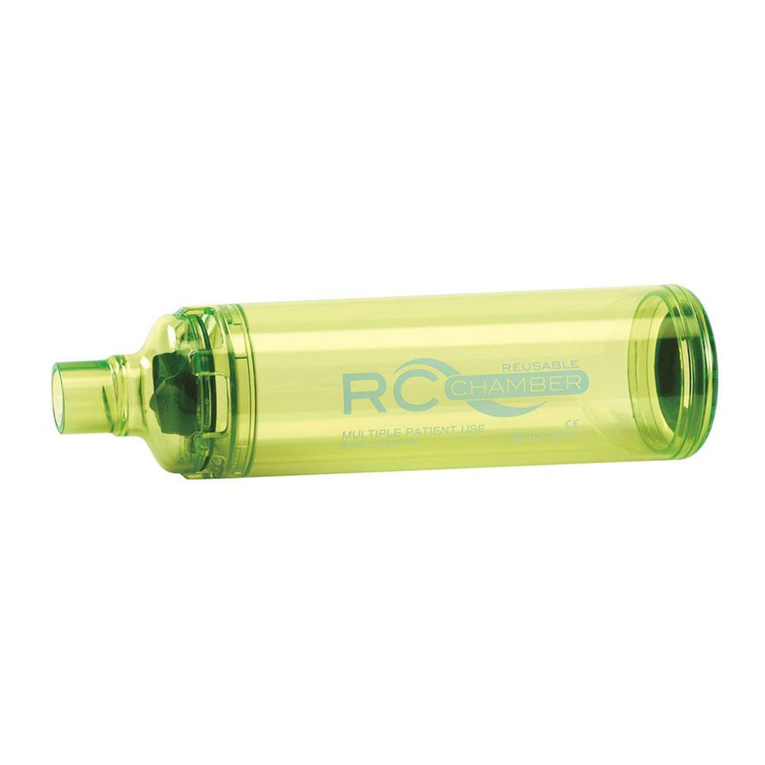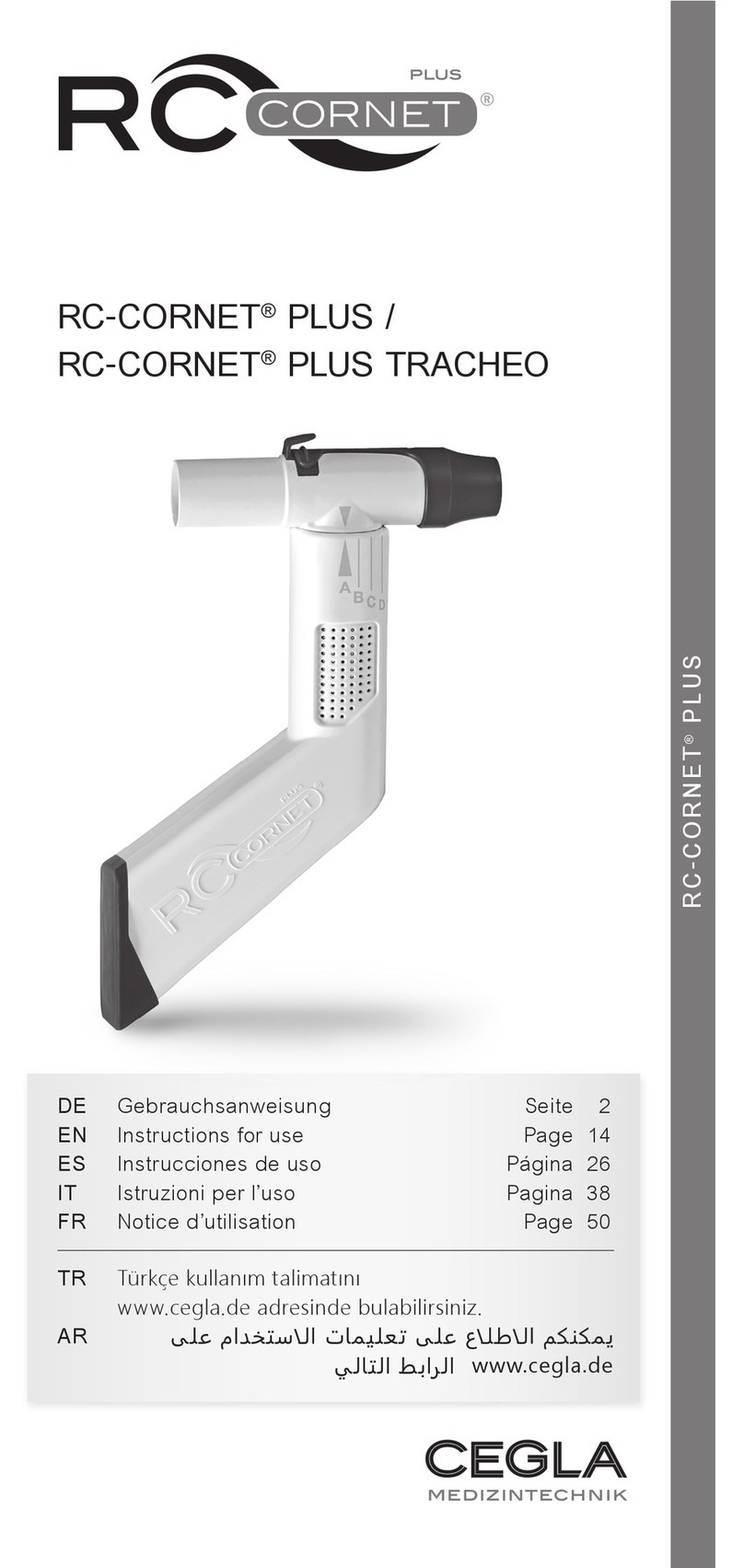The Digital Pulmonary Function
Test for COPD and Pulmonary
Emphysema
COP D
TesT
PHYSIOLOGICAL BACKGROUND
The physiological background of the
pulmonary parameters.
The lungs are made up of airways,
bronchi, bronchiole and millions of
alveoli. The diameter of the smallest
bronchiole is very small compared to
the large bronchi and the airways.
The one second capacity (FEV1)
measures in the first second the ma-
ximum exhaled lung volume. This
measurement predominantly mirrors
a narrowing of the large airways. The
six second capacity in contrast is
the standard for the measurement of
changes to the small airways.
Unlike to the bronchi, the bronchio-
le are not stabilized by cartilage, but
rather, held open by elastic draws in
the lung tissue. When inhaling deeply
these draws cause the bronchiole to
expand. When exhaling the draw of
the lung tissue lets up due to the shrin-
king lung volume which narrows the
bronchiole even more.
The Six Second Capacity (FEV6)
measures the “rest” breathing volume
after 6 seconds of exhaling. That is, at
a point in time at which the retraction
power of the lung volume, as descri-
bed above, is significantly diminished.
COPD is an illness which besides the
larger airways (mucous buildup, nar-
rowing) primarily effects the smallest
airways and the pulmonary alveoli.
This results in dissolution of the setting
of the smallest airways and thereby
causing a diminished holding open of
these bronchial parts during exhaling.
The FEV6 mirrors therefore the distur-
bances in the pulmonary periphery si-
gnificantly better than the FEV1. From
the ratio FEV1/FEV6 the narrowing of
the smallest airways can be determi-
ned.
With illnesses such as pulmonary fi-
brosis (an airway restricting illness)
the fibrosis affected lung tissue of the
bronchiole is pulled apart, so that with
a generally diminished FEV1 (due to
diminished lung volume with pulmona-
ry fibrosis) the FEV6 is in comparison
significantly increased.
With COPD we observe disturbances,
which can be (partially) rectified with
medicine and other changes which are
caused by physical disturbances of the
lung tissue and thereby cannot respond
to medicine.
Here the physical therapy, for example
with the RC-Cornet (basic cornet), can
help. This respiratory therapy device
loosens mucous, stabilizes and expands
the small bronchi and reduces shortness
of breath of the patient.
Detailed instructions for use are availa-
ble at www.cegla.de.
07/2015
Article-no. 160EN
PPN 1107 1177 1670
The related products as well as accessories for
the RC-Test are available in pharmacies, medical
supply stores or at www.cegla-shop.com.
RC-Cornet®
Respiratory Therapy Device
Loosens mucous, reduces short-
ness of breath and coughing.
Article-no. 210EN
PPN 1108 4186 6756
PIP 392-5542
Oxygen cannula craton
adults
Comfortable to wear due to
the soft kraton nose tips.
Article-no. 710EN
PPN 1103 3673 0429
Oxygen cannula
phthalate-free adults
With soft kraton nose tips,
free of phthalate (plasticizers).
Article-no. 760EN
PPN 1110 3980 1541
RELATED PRODUCTS
INSTRUCTIONS FOR USE
0
1
2
3
Normal
I
II
III
IV
Obstruction
Index COPD-
Classifi-
cation
FEV1/ FEV6-
ratio and
FEV1 value in % of
the standard value (SV)
FEV1 / FEV6 0,70
FEV1 / FEV6 < 0,70 &
FEV1 80 % of the NW
FEV1 / FEV6 < 0,70 &
FEV1 < 80 % of the NW
FEV1 / FEV6 < 0,70 &
FEV1 < 50 % of the NW
FEV1 / FEV6 < 0,70 &
FEV1 < 30 % of the NW
FEV1-Value
iin % of
the standard
value
80 %
< 80 %
< 50 %
< 30 %
DISPLAY EXPLAINATION
Please read the instructions for use
of the RC-Test COPD carefully before
first use.
Manufacturer:
R. Cegla GmbH & Co. KG
Horresser Berg 1
56410 Montabaur
Germany
www.cegla.de























